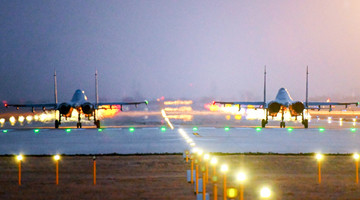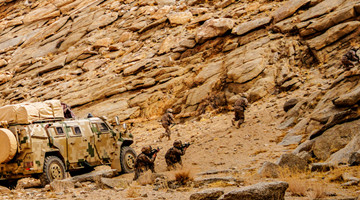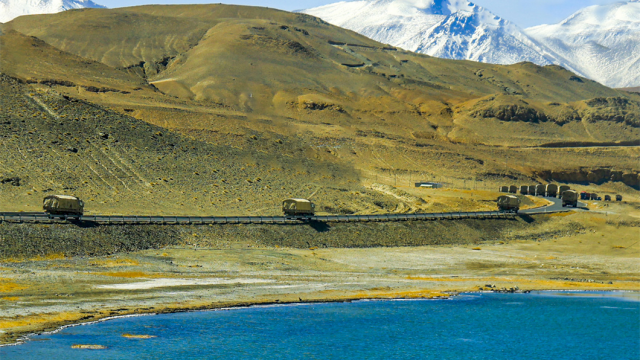By Wang Jin
Taliban spokesperson Zabihullah Mujahid said on social media on August 11 that the Taliban had seized Pul-e Khumri, the capital of Baghlan Province, and Faizabad, the capital of Badakhshan Province in northern Afghanistan. Since the US troops began to withdraw from Afghanistan on May 1, the Taliban have announced to have seized nine out of a total of 34 provincial capital cities. In response to the Taliban's offensive in the northern provinces, Afghan president Ashraf Ghani rushed to Mazar-i-Sharif, capital of the northern Balkh Province on August 11 and hosted a security meeting to discuss and coordinate government forces and local armed forces to resist the Taliban.
The change in the battlefield situation in Afghanistan is rooted in the irresponsible "flee-style" withdrawal of the US. The US sent troops to Afghanistan in the name of anti-terrorism in 2001, which in fact further aggravated the original political disputes in Afghanistan. After realizing that it could not rely on the battlefield to solve the anti-terrorism issue, the US set aside the Afghan government, held peace talks and reached agreements with the Afghan Taliban, which harmed the prestige of the current government in Afghanistan and strengthened the political legitimacy of the Taliban both domestically and internationally. After the Biden administration took office, the US accelerated its withdrawal from Afghanistan. In some key areas, it withdrew without even coordinating with the Afghan security forces. The "security vacuum" left by the US has created extreme uncertainty under the current situation in Afghanistan.
US media reported that Afghanistan may fall under the control of the Taliban to a large extent within two to three years after the withdrawal of international forces. In fact, in just two months after the US withdrawal, areas under the Taliban's control have doubled, surpassing that of the Afghan government. In the recent period, the Afghan Taliban have attacked several provincial capitals and key border towns, most of which are located on the eastern and northern borders of Afghanistan. This situation shows that the Afghan Taliban's current strategy of "North first and then South" and "Border first and then Central" is significantly different from the strategy of "South first and then North" and "Central first and then Border" that swept Afghanistan in the mid to late 1990s.
In the 1990s, the Afghan Taliban was based in the southern Kandahar province and expanded to the north. After defeating various warlords, they seized the opportunity to capture the capital Kabul and then continued to compress the space of the opposition military forces to the north. They reached the border areas with neighboring Turkmenistan, Uzbekistan and Tajikistan. The main reason for adopting this strategy is that the Afghan Taliban was a political and military force dominated by Pashtuns in the south, and there was a competitive relationship with Uzbeks, Tajiks and Hazaras in the north at that time. Rising from the south and then advancing to the north was a more reasonable choice given the situation at that time.
However, in the recent offensive, the Afghan Taliban's strategy is to attack the north first. For example, Kunduz is a city with the majority of Tajiks and Uzbeks in Afghanistan. This shows that the Afghan Taliban has broken through the traditional regional ethnic restrictions, and its political advantage has extended to many areas of Afghanistan. In addition, the Afghan Taliban mostly dominated the rural and remote mountainous areas in the past, but the recent battles were mostly concentrated in the major provincial capitals. The scale of the forces assembled has become larger, showing that the focus of military fighting has gradually shifted from the rural and remote mountainous areas to big cities.
In the face of criticism from the international community for its withdrawal, the US launched an airstrike against the Afghan Taliban's military forces on the grounds that the Afghan Taliban had failed to comply with the peace agreement. However, with no more troops stationed in Afghanistan, it is unlikely that the US will change the situation on the battlefield with only airstrikes by airpower mobilized from the outside. It is more like a posture to deal with the international community. The White House claimed on August 10 that Afghanistan government forces must " fight for themselves, fight for their nation ," which is just another explicit performance of "US-style blame-shifting".
Situation changes in Afghanistan affect the security of the surrounding areas. On the one hand, the domestic conflict in Afghanistan is likely to "overflow" to neighboring countries, and neighboring countries have to pay close attention to the situation in Afghanistan and strengthen the deployment of troops in border areas. On the other hand, the regional chaos brought about by the war in Afghanistan is very likely to become a breeding ground for extreme forces. In this regard, neighboring countries must work together to respond to possible threats of terrorism and extremism.
(The author is from the Institute of Middle Eastern Studies of Northwestern University )









